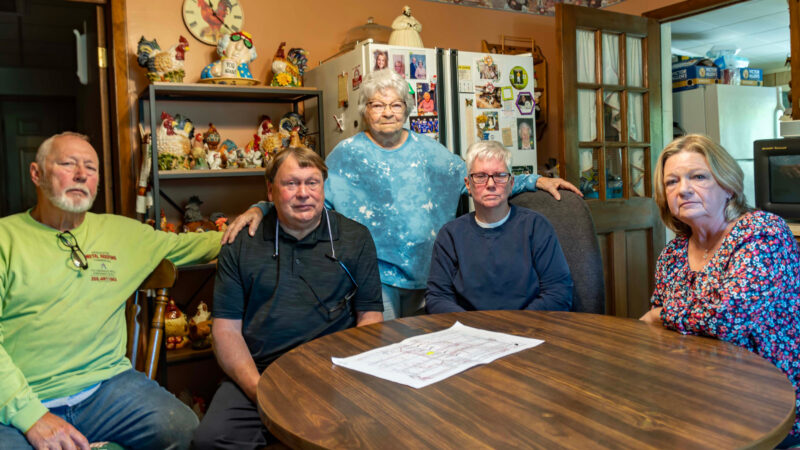Domestic Abuse and Mental Illness
When Denise Brown travels, people recognize her…and they tell her their stories. Like this one…
“I was in Atlanta, and a woman sitting next to me had all these patches out of her hair, these bald spots, and these marks on her arms and I was thinking, ‘Gosh, what happened to her?’ And her sister comes over and starts telling me the story of how her husband burns her with a cigarette, singes her hair, and then has his son… their son…burn her neck. And you could sit there and talk to her, and know that she wants to go back. She wants to go back into this abusive situation because that’s all she knows.”
Brown bears a striking resemblance to her younger sister, Nicole Brown Simpson, who for a period of time in 1995 became perhaps the world’s best-known victim of domestic violence as the murder trial of Nicole’s husband O.J. Simpson was broadcast around the globe. For the past 10 years, Denise Brown has been crisscrossing the United States-speaking about domestic violence and helping organize educational programs to raise public awareness about a phenomenon that’s often described as an epidemic. Brown recently visited Birmingham, for a seminar hosted by the UAB School of Public Health.
“We didn’t know about the abuse she was enduring. We didn’t know until after she was murdered. The notes and the diaries that she left behind. My sister’s murder brought domestic violence to the forefront. It was viewed as something that happened to homeless people, to lower socio-economic people, but not to the affluent, upper middle-class community.”
Every year, some three million Americans-most of them women-are physically assaulted by a partner. The number three has an eerie relevance in statistics about the problem…one in three women will experience domestic violence at some point in her life. But because of fear or embarrassment, only about one in three of those assaults, experts believe, are ever reported to authorities. And the children in a household where there’s domestic violence are three times more likely than average to be abused, themselves. And there’s one central theme that runs through all those statistics, according to Dr. Melissa Galvin of the UAB School of Public Health.”
“The main thing to remember is that domestic violence, by and large, is a learned behavior…If children see it when they’re younger, one parent doing it to another, then they’re more likely to do that. If violence is the way that we handle stress and anger in our home as children, then violence is how we’re going to handle it as adults. Not only for the perpetrator, but also the victim. If the victim has seen a relationship that’s unhealthy, then their expectation is that it’s normal to be slapped around a little bit. So they’re more willing to accept it as they get older.’
The connections between domestic violence and mental illness are numerous and complicated…and they apparently consist of both cause and effect. For example, a person with a psychiatric disorder is more likely than others to be a target of abuse because he or she is perceived by their attacker as being more vulnerable, according to data collected by the American Psychiatric Association. Conversely, the fallout of abuse in a household extends far beyond the couple, themselves. A new study by researchers at Johns Hopkins finds that adolescents who see domestic violence between their parents are far more likely to suffer symptoms of clinical depression-including headaches, digestive problems, social isolation, insomnia, and thoughts of suicide. That last symptom is especially disturbing because suicide is the third leading cause of death among teenagers worldwide. And according to both Brown and Galvin, the subject of domestic violence occupies an uncertain crossroads in society, between the fields of mental health and criminal justice. They say important strides have been made in the law enforcement aspects of abuse cases during the past several years, but much remains to be done.
“Do you know, there are more laws on the books than people know what to do with? It’s just a matter of educating people on those laws. Educating the judges, law enforcement, the prosecutors, the D.A.’s office, everybody, on what those laws are. It’s all about education. People need to know that there’s a shelter they can go to, an 800 number they can call. Statistics say that people go back to abusive relationships an average of seven or eight times before actually leaving. ”
Denise Brown says she never pictured herself as an activist of any kind, before her sister’s murder thrust her family into the public spotlight.
“Yeah, I was angry. I still am angry. But you learn how to deal with your anger. The first few years I didn’t know how to deal with it. Time heals all, but…the fact that Nicole’s gone, time does not heal that. The only thing that’s subsided in that department are the tears. Because you haven’t talked to that person in 11 years. You haven’t said ‘I love you’ in 11 years. That’s the really hard part. The good thing is that we get the issue of domestic violence out to the public. Everything kind of plays out the way it’s supposed to play out…for a reason. And domestic violence isn’t the dirty little secret any more, that it used to be. ”
Alabama coal mine keeps digging after hundreds of fines and a fatal explosion
Following the death of a grandfather, Crimson Oak Grove Resources has left a community afraid for their homes and lives. An expert warns one resident may need to evacuate her home while she still can.
Florida’s 6-week abortion ban will have a ‘snowball effect’ on residents across the South
Abortion rights advocates say the ban will likely force many to travel farther for abortion care and endure pregnancy and childbirth against their will.
Attitudes among Alabama lawmakers softening on Medicaid expansion
Alabama is one of ten states which has not expanded Medicaid. Republican leaders have pushed back against the idea for years.
Birmingham is 3rd worst in the Southeast for ozone pollution, new report says
The American Lung Association's "State of the Air" report shows some metro areas in the Gulf States continue to have poor air quality.
Why haven’t Kansas and Alabama — among other holdouts — expanded access to Medicaid?
Only 10 states have not joined the federal program that expands Medicaid to people who are still in the "coverage gap" for health care
Once praised, settlement to help sickened BP oil spill workers leaves most with nearly nothing
Thousands of ordinary people who helped clean up after the 2010 BP oil spill in the Gulf of Mexico say they got sick. A court settlement was supposed to help compensate them, but it hasn’t turned out as expected.







